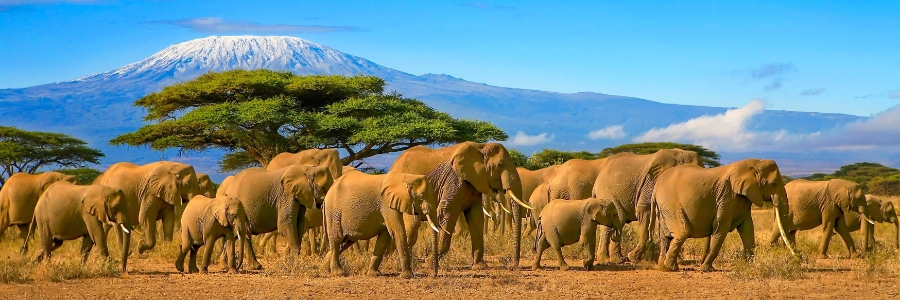Sustainable tourism as a tool for community and environmental development

Sustainable tourism is more than a buzzword; it is an essential strategy for fostering environmental conservation and community development. By balancing economic growth with environmental preservation and social well-being, sustainable tourism initiatives worldwide are setting benchmarks for how travel can be a force for good.
From Costa Rica’s eco-tourism model to Tanzania’s integration of conservation and tourism, and Spain’s innovative sustainable tourism tax, these initiatives demonstrate the transformative power of responsible travel. Each provides valuable lessons on how the tourism sector can not only preserve natural and cultural resources but also empower communities and contribute to long-term economic stability.
Sign in to access actionable insights
Sustainable tourism is more than a buzzword; it is an essential strategy for fostering environmental conservation and community development. By balancing economic growth with environmental preservation and social well-being, sustainable tourism initiatives worldwide are setting benchmarks for how travel can be a force for good.
From Costa Rica’s eco-tourism model to Tanzania’s integration of conservation and tourism, and Spain’s innovative sustainable tourism tax, these initiatives demonstrate the transformative power of responsible travel. Each provides valuable lessons on how the tourism sector can not only preserve natural and cultural resources but also empower communities and contribute to long-term economic stability.
Costa Rica pioneers eco-tourism
Costa Rica has become a global symbol of sustainable tourism, embedding ecological preservation into its national identity. The country has carefully designed its tourism offerings to minimise environmental impact while maximising community benefits. In 2019, Costa Rica’s travel sector accounted for 12% of its economy, underscoring its significance in national development.
What sets Costa Rica apart is its focus on developing eco-tourism products and services. Protected areas like national parks and biological reserves are at the heart of this strategy, attracting visitors eager to explore rainforests, beaches, and diverse wildlife. Revenue from these efforts supports conservation projects, improves local infrastructure, and elevates access to essential services like education and healthcare. Costa Rica’s success exemplifies how aligning tourism with sustainability can amplify both environmental and community well-being.
Tanzania merges conservation and local prosperity
Tanzania offers another compelling example of sustainable tourism, where conservation and economic development go hand in hand. Boasting a third of its land as protected areas, including iconic destinations like Mount Kilimanjaro and the Serengeti, Tanzania has made a significant commitment to preserving its natural heritage.
Tourism in Tanzania has proven to be a boon for local communities. For instance, revenues generated from Kilimanjaro National Park are reinvested into poverty reduction initiatives, supporting education, healthcare, and local employment. In 2015 alone, the Kilimanjaro region provided jobs for approximately 400 guides, 10,000 porters, and 500 cooks, while achieving the highest school enrolment and literacy rates in the country. This integration of eco-tourism with community upliftment underscores how the tourism sector can drive socio-economic development without compromising environmental integrity.
Spain funds sustainability through tourism taxes
Spain’s innovative sustainable tourism tax, implemented in Palma de Mallorca, highlights how fiscal policy can support green projects. Launched in 2016, the tax charges tourists a small fee based on their accommodation level, generating substantial revenues earmarked for environmental conservation and climate research.
The funds have been invested in initiatives such as the Green Belt Project, which reintroduces vegetation in urban areas to combat rising temperatures and improve air quality. Solar panels and irrigation systems have been installed along the coastline, and green pathways have been developed for hikers and cyclists. This approach not only enhances the quality of life for residents but also ensures that the tourism sector contributes directly to mitigating its environmental footprint.
The broader impact
Sustainable tourism initiatives drive transformative outcomes by addressing pressing environmental and social challenges. At its core, sustainable tourism promotes the responsible use of natural resources while creating economic opportunities for local communities. The multiplier effect of these initiatives extends beyond direct employment, fostering entrepreneurship and supporting diverse industries such as agriculture, retail, and handicrafts.
Sustainable tourism also empowers marginalised communities. In Tanzania, eco-tourism projects provide jobs and educational opportunities, especially for women and youth. Similarly, in Costa Rica, the emphasis on community-led tourism ensures that benefits are distributed equitably, reducing disparities and promoting social cohesion.
The global tourism sector, contributing over 10% to the world’s GDP, holds immense potential to act as a catalyst for sustainable development. However, realising this potential requires thoughtful planning, investment in green infrastructure, and active community engagement. It is imperative to replicate and scale successful models like those of Costa Rica, Tanzania, and Spain. These examples show that with the right policies and partnerships, tourism can foster a brighter future for communities and ecosystems alike.

















